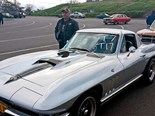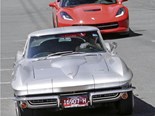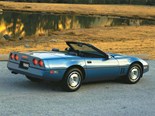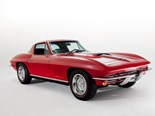Chevrolet Corvette C2 (1963-67) Buyers' Guide
 1963-67 Chevrolet Corvette C2
1963-67 Chevrolet Corvette C2

 1963-67 Chevrolet Corvette C2
1963-67 Chevrolet Corvette C2

 1963-67 Chevrolet Corvette C2
1963-67 Chevrolet Corvette C2

 The 'Stinger hood' jacked up the aggression a few notches
The 'Stinger hood' jacked up the aggression a few notches

 1963 Corvette C2
1963 Corvette C2

 1963-67 Chevrolet Corvette C2
1963-67 Chevrolet Corvette C2

 1963-67 Chevrolet Corvette C2
1963-67 Chevrolet Corvette C2

 1963-67 Chevrolet Corvette C2
1963-67 Chevrolet Corvette C2

 1963-67 Chevrolet Corvette C2
1963-67 Chevrolet Corvette C2

.jpg) 1963-67 Chevrolet Corvette C2
1963-67 Chevrolet Corvette C2
.jpg)


 The fuel-injected cars have the most modern-looking engine bays
The fuel-injected cars have the most modern-looking engine bays

 The fuel-injected cars have the most modern-looking engine bays
The fuel-injected cars have the most modern-looking engine bays

 The fuel-injected cars have the most modern-looking engine bays
The fuel-injected cars have the most modern-looking engine bays

 The tri-power engines draw the crowds
The tri-power engines draw the crowds

 1964 Corvette Ad
1964 Corvette Ad

 1965 Corvette Ad
1965 Corvette Ad

 Corvette Historical Brochure 1965-6
Corvette Historical Brochure 1965-6


|
|
1963-67 Chevrolet Corvette C2
|

|
|
1963-67 Chevrolet Corvette C2
|

|
|
1963-67 Chevrolet Corvette C2
|

|
|
The 'Stinger hood' jacked up the aggression a few notches
|

|
|
1963 Corvette C2
|

|
|
1963-67 Chevrolet Corvette C2
|

|
|
1963-67 Chevrolet Corvette C2
|

|
|
1963-67 Chevrolet Corvette C2
|

|
|
1963-67 Chevrolet Corvette C2
|
.jpg)
|
|
1963-67 Chevrolet Corvette C2
|

|

|
|
The fuel-injected cars have the most modern-looking engine bays
|

|
|
The fuel-injected cars have the most modern-looking engine bays
|

|
|
The fuel-injected cars have the most modern-looking engine bays
|

|
|
The tri-power engines draw the crowds
|

|
|
1964 Corvette Ad
|

|
|
1965 Corvette Ad
|

|
|
Corvette Historical Brochure 1965-6
|
The impossibly glamorous 'mid-year' Corvette is always a big draw. Cliff's your guide to landing a beauty
1963-67 Chevrolet Corvette C2
f the first version of ‘America’s Own Sportscar’ felt constrained by corporate design restrictions and convention, no such impediments were allowed to exist when Version Two came along.
The retrospectively-designated Corvette C2 wasn’t exactly a clean-sheet design, but had been inspired by something so radical that no one within the world’s most conservative car-maker seriously considered re-shaping into a production automobile. The hell they didn’t.
The original Sting Ray was a low, wide open-topped projectile with a knife-edge belt-line and ‘pods’ above each wheel. The air-intake below the bumper and massive bonnet vents hinted that this car was intended to carry a very large and powerful engine.
Not until the production-ready Sting Ray appeared did anyone outside General Motors see the distinctive and divisive coupe rear window that was included at the insistence of stylist Bill Mitchell. It lasted just one year but C2 coupes never did get a proper boot-lid, let alone an E Type-inspired hatch, so owners had to stow luggage from inside the car.
Just one engine was available in 1963; a 5.3-litre V8 with single four-barrel induction or fuel injection. The transmission was manual with three or four speeds, the brakes all-drum. An automatic would join the range in 1964 but it would be 1965 before the drum brakes were replaced by an all-disc arrangement.
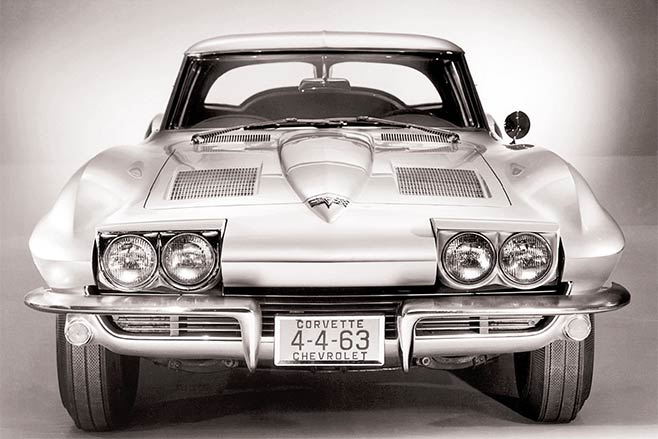
In a throwback to pre-World War 2 suspension design, the independent rear end incorporated a transversely-mounted leaf spring. It owed its existence to the sheer impracticality of the C2 design which left no space between the steel frame and fibreglass body for coils.
With ‘fuellie’ cars delivering 270kW but demanding more maintenance than the average American was competent or comfortable to provide, GM looked to its bank of ‘big block’ engines for something that would deliver the grunt that buyers were increasingly demanding.
However, GM convention decreed that cars the Corvette’s size and weight couldn’t have engines larger than 400 cubic inches (6.6 litres) so the 7.0-litre 427 was downsized to 396 cubic inches before being slotted into the 1965 Corvette. Suddenly, Chevrolet had an E Type eater, if not a Cobra killer.
New in 1966, a 396-engined Corvette four-speed cost US$5200. That was $200 below the less-powerful open-top Jaguar and almost $2000 cheaper than Carroll Shelby’s uncompromising 7.0-litre Cobra.
The low price was a little illusory though and if you wanted your ‘Vette with some frills it was going to cost you. Popular options like power steering added $95, electric windows $59 and leather trim $79. Add an AM/FM radio ($199) and the ‘drive-away’ price quickly climbed beyond $6000.
By 1967 and with a completely reshaped Corvette on the horizon, there wasn’t much point to changing an already good thing. New slotted wheels were added and some embellishments were removed for a clean, even stark, look. The ban on engines above 400 cubes was gone, so stock ‘Vettes were available with two versions of the thumping 427 and a vicious L88 version rated at 420kW.
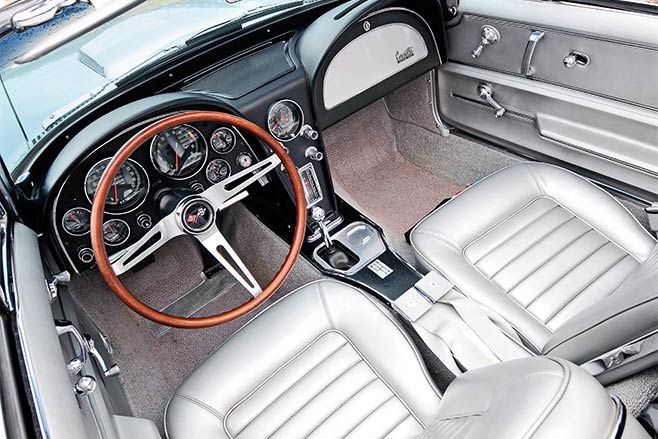
ON THE ROAD
If you are over 180cm tall and long in the leg then C2 ownership might not be for you. That just leaves more of them for the rest of us.
The Sting Ray cabin is apparently no longer than the C1’s space but various ploys make it feel larger. The steering column was adjustable so the wheel could move closer to the dash which is recessed to give the impression of extra space.
Seats were thin and flat and could be reclined so drivers weren’t obliged to drive with bent elbows. Every instrument and piece of cabin hardware – using that word advisedly – is hard, chrome-plated and positioned just where they can inflict knee, hand or head injuries in a crash. If a C2 has seat belts at all they will only restrain the lower half of the occupants’ bodies.
Given that these cars are, or soon will be, more than 50 years old, performance is just ridiculously good. The slowest C2 you’re likely to find are 5.3-litre coupes with Powerglide transmission and even they will rumble their way to 100km/h in a shade over eight seconds. A ‘fuellie’ 327 will get below six seconds for the same journey.
The 396 cubic-inch ‘big block’ cars were at times compared against similarly-engined Pontiac GTOs and Ford Mustangs; running away with the standing 400 metre prize due to superior of-the-line traction.
While the heavier Pontiacs left impressive trails of burned rubber, the Corvette gripped faster and more fiercely and reached the end of their run in times that averaged 14 seconds. Coupes were more aerodynamic than Roadsters and with the standard 3.70:1 differential ratio managed a top speed 223km/h.
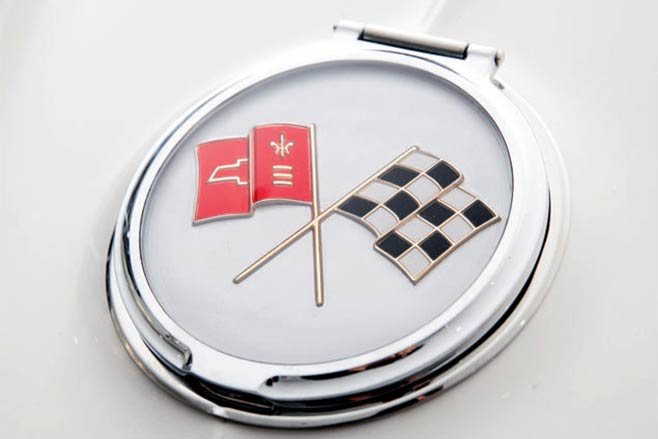
If an ancient-looking transverse leaf spring looked weird doing duty beneath the rear of America’s most advanced sports model, the road testers who put it through its paces didn’t complain.
What they didn’t like were the standard cross-ply tyres with tall sidewalls that quickly got hot and reduced the car's otherwise impressive
cornering capabilities.
At higher speeds there was an oft-reported sense of disconnection between the skinny steering wheel and Wide-Oval rubber. Due to inadequate tyre grip, retardation reached only 0.7g before the front brakes locked.
BUYING
Brand new C2 Corvettes were rarely seen on Australian roads. On the odd occasions one did arrive it was usually as decoration for Holden dealer showrooms or to attract the curious to regional show displays.
Few of those original imports survive and that’s no bad thing. Right-hand drive conversions undertaken in the era before serious engineering inspections were required are at best untrustworthy and can be downright dangerous.
Choosing a car with its steering wheel still on the left will maintain dynamics and steering response as the factory intended and ensure that things like heater trunking haven’t been butchered.
Overseas is without doubt the best place to shop for a 1960s Corvette. Even with exchange rates sagging, there are literally thousands for sale in the USA. so negotiate and pick yourself a genuine gem. You can even shop from home via numerous internet sites devoted purely to Corvette sales.
Topping the range but still mostly below US$200,000 are 7.0-litre Roadsters with the 3x2 barrel L71 engine and four-speed transmission. Big-block coupes in sound condition cost slightly less than $100,000 with 5.3-litre cars $30-40,000 cheaper.
By comparison, a good 5.3-litre Roadster in Australia is likely to sell sell for $70-80,000 with coupes bringing only slightly less.
Advice from Unique Cars’ own ‘Uncle’ Phil Walker is to buy a manual, disc-braked car and be super-picky. So many good Corvettes have survived that there is no excuse for buying a bad one.
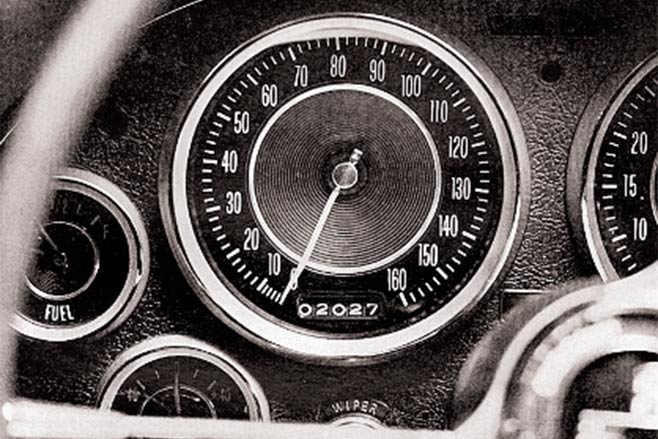
BUYER'S CHECKLIST
Body & Chassis
Fibreglass has one huge advantage over the steel used by most car-makers for their body panels. It doesn’t rust. What it does do is crack and craze and conceal a steel frame that is susceptible to rust in places that can be difficult to see and access. Most serious from a safety stance is corrosion due to dirt build-up around rear suspension mounts and cracks to steering box mounting points. Look also for rust stains due to deterioration of steel framing around the windscreen. behind the front mudguards, sills and firewall. Providing the fibreglass is sound, other parts needed for body restoration are easy to find and usually not expensive. Avoid cars with
damaged bumpers.
Engine & Transmission
Chevrolet V8s of every kind are strong and very simple to maintain. Most common in C2s are small-block 5.3 or after-market 5.7-litre motors with single four-barrel carburettors and no particular issues. Valley cover and rear main bearing oil leaks usually aren’t serious but be wary of fuel stains or smells as in a fibreglass car you do not need a fuel fire. Chuffing noises usually mean there’s a cracked exhaust manifold somewhere. The Muncie manual transmission takes some effort to manipulate, however the gears shouldn’t baulk. Clutch shudder can be a symptom of general drive-line wear . The Powerglide auto is a tough transmission and cheap to fix even if it is slipping.
Suspension & Brakes
The wisdom of fitting all-drum brakes to a car with the capabilities of a C2 was questioned even when they were new, so disc/disc versions are essential for serious use.
US$1250 buys parts needed for an all-disc upgrade and fitting is reportedly simple. Even disc brakes still need to be in good condition though, with warp-free rotors and no sinking pedals. If the suspension creaks and the steering shudders when turning at very low speeds, prepare for some expense but also check that the steering box is securely mounted. The transverse leaf spring at the back is well hidden but worth inspecting for cracked leaves or shackles that are flogged out. Worn diff mounts will produce annoying clunks.
Interior & Electrics
Neglect and sun exposure afflict Corvette interiors. The materials were cheap and don’t survive long if exposed to the elements. Good news is that new vinyl and even eather seat trims, door linings, carpets and dash components are available. Damaged instruments, missing control knobs and scratched glass are more costly to replace.
Seats will often have been the same position for many years and be difficult to adjust. Check that the seat frames aren’t bent or broken and the hood-lining hasn’t been
damaged by people trying to juggle luggage into the ‘boot’ Make sure that the lights emerge and retract quickly and the pods align properly with the body when retracted.
SPECIFICATIONS
Chevrolet Corvette (1963-67)
Number made: 117,764 (all types)
Body styles: steel and bonded glass-fibre two-door coupe and convertible
Engine: 5356, 6489, 6996cc V8 with overhead valves, single or triple downdraft carburettors, fuel injection
Power & torque: 224kW @ 5000rpm, 486Nm @ 3200rpm (327 4bbl)
Performance: 0-96km/h 6.3 seconds, 0-400 metres 14.4 seconds (327 FI)
Transmission: three or four-speed manual or two-speed automatic
Suspension: Independent with A-arms, coil springs, anti-roll bar and telescopic shock absorbers (f) Independent with transverse leaf spring and locating struts, telescopic shock absorbers (r)
Brakes: disc/disc or drum/drum power assistance optional
Tyres: 7.75x15 cross-ply
Price range: $35,000-180,000
Contact: Corvette clubs in all States
www.netcorvettes.net
Unique Cars magazine Value Guides
Sell your car for free right here
Get your monthly fix of news, reviews and stories on the greatest cars and minds in the automotive world.
Subscribe

.jpg)





.jpg)

